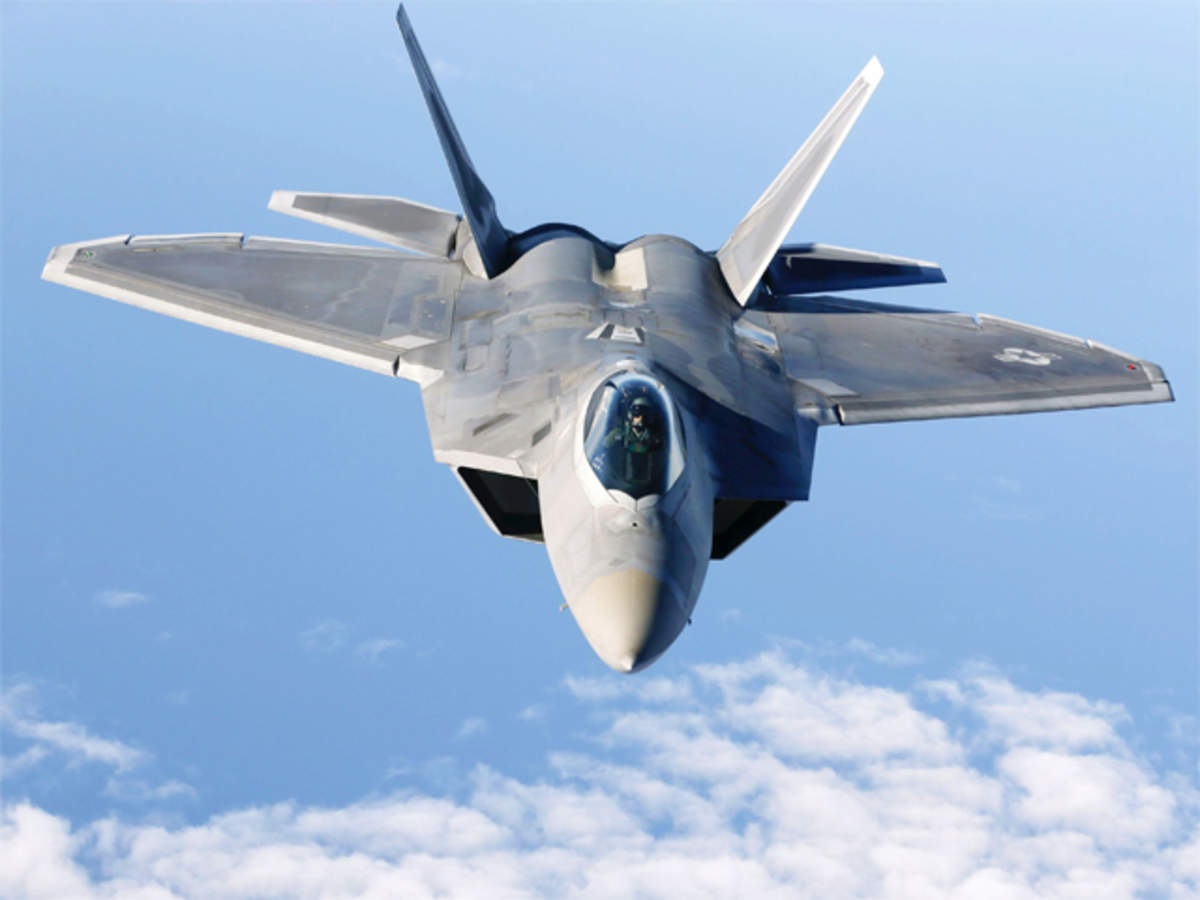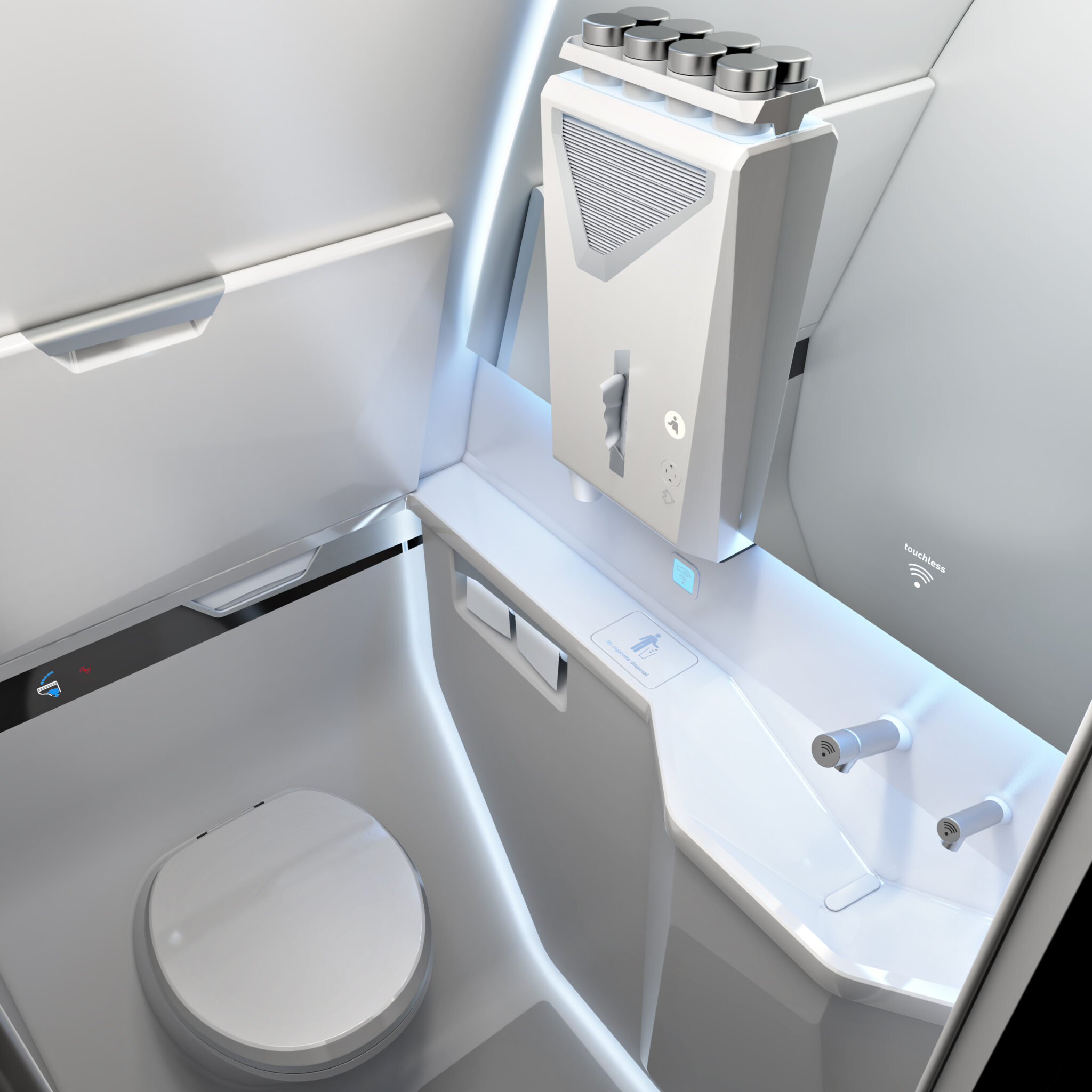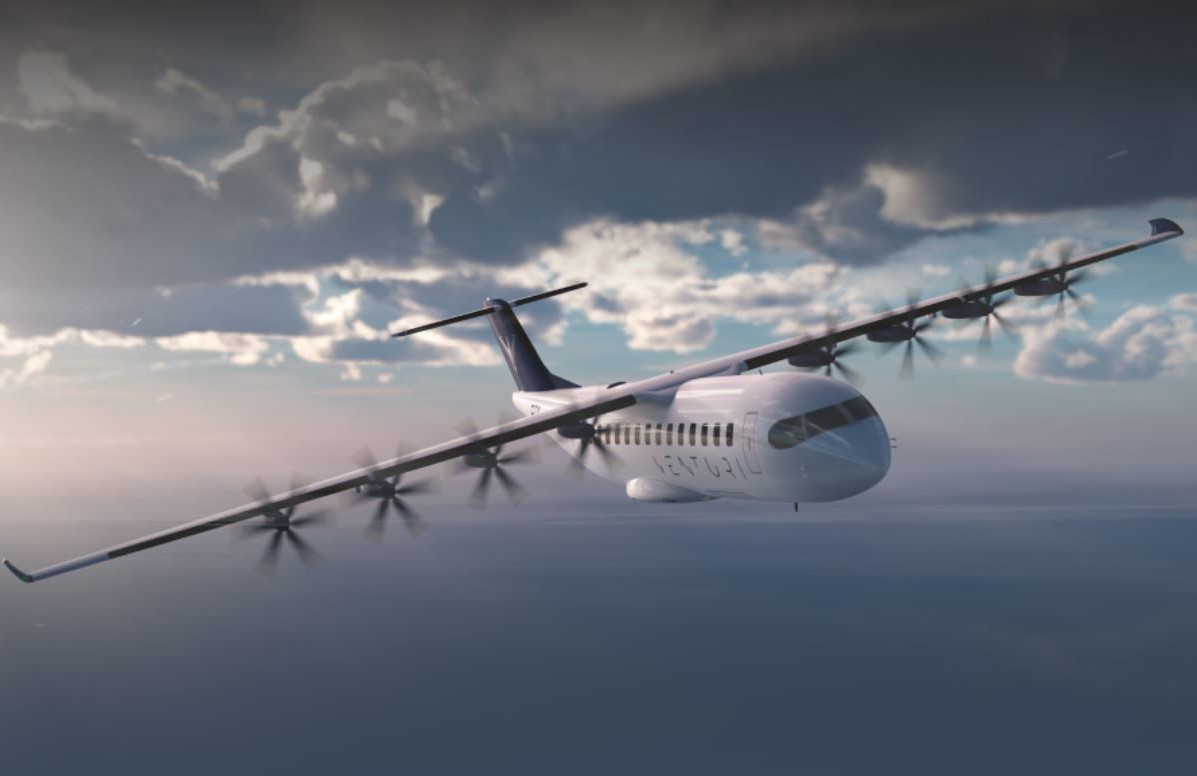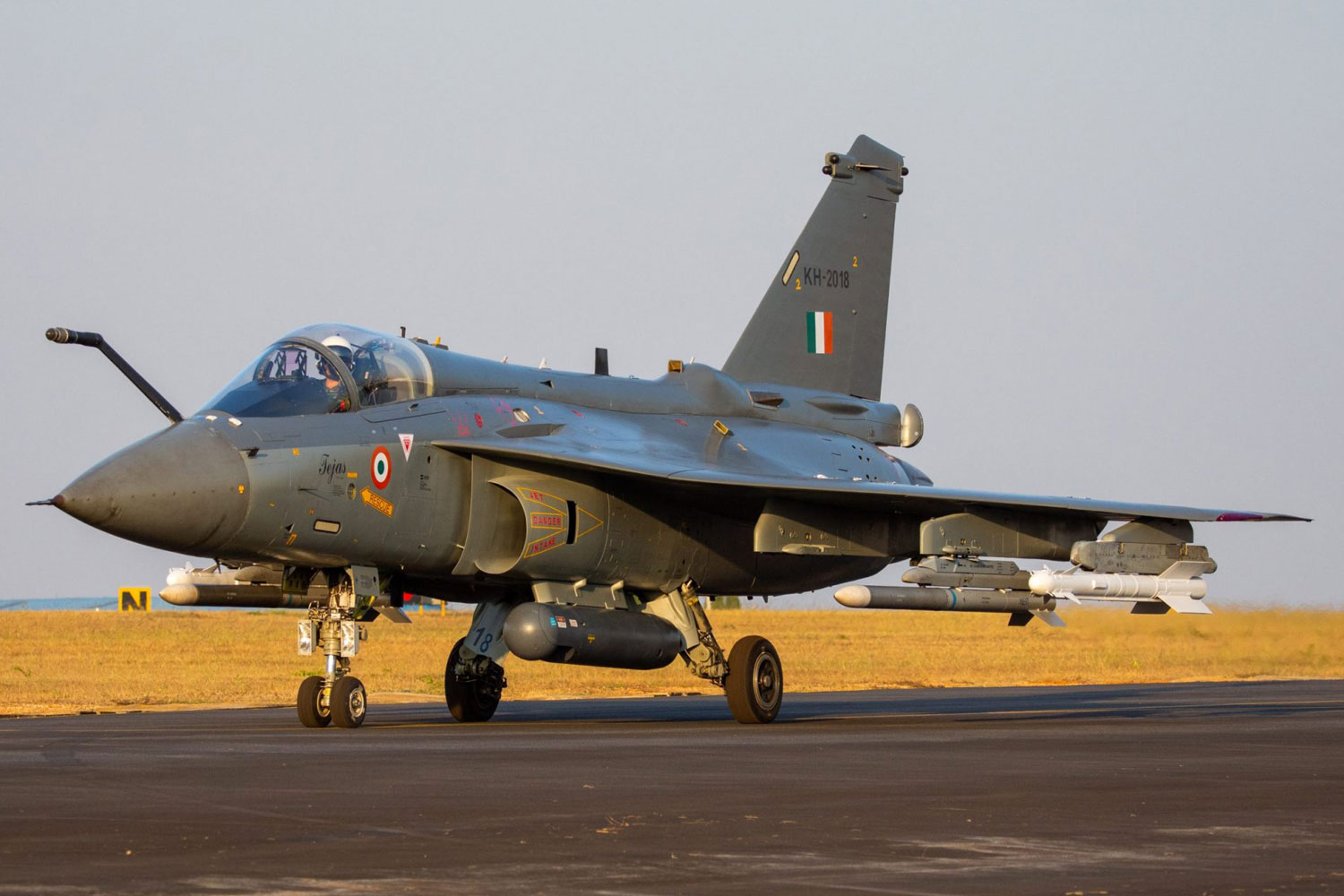IAF’s Make In India fighter jet project takes wings, around 100 aircraft to be built at home
Jinen Gada
24 Jun 2022

In a most important boost to the Make in India initiative, the Indian Air Force (IAF) plans to construct around one hundred advanced fighter jets in India, for which it has begun talks with the international plane manufacturers.
The Aatmanirbhar push will, for the first time, see Indian foreign money being used to make payments for nearly 70% cost of the project.
The Indian Air Force has plans of acquiring 114 Multirole Fighter Aircraft (MRFA) under the 'Buy Global and Make in India' scheme under which Indian companies would be allowed to partner with a foreign vendor.
Recently, the Indian Air Force held meetings with foreign vendors and asked them about the way they would carry out the Make in India project.
The Indian Air Force to build around 100 advanced fighter jets in India
As per the plan, after the initial 18 aircraft are imported, the next 36 aircraft would be manufactured within the country and the payments would be made partially in foreign currency and Indian currency.
The last 60 aircraft would be the main responsibility of the Indian partner and the government would make payments only in Indian currency. The payment in Indian currency would help the vendors to achieve the over 60% 'Make-in-India' content in the project.
The Indian Air Force has to rely heavily on these 114 fighter jets for maintaining its superiority over the neighbouring rivals Pakistan and China.
The 36 Rafale aircraft procured under emergency orders helped immensely in maintaining an edge over the Chinese during the Ladakh crisis which started in 2020 but the numbers are not enough and more such capability would be required by it.
The IAF has plans of buying 114 planes, which would be used for augmenting its fight competencies and changing its outgoing fleet of MiG series planes.
The force has already placed orders for 83 of the LCA Mk 1A aircraft but it still requires a higher number of capable aircraft as a large number of MiG series planes have either been phased out or are on their last legs.
The IAF is also looking for a cost-effective solution for its fighter jet requirement as it wants a plane that is low on operational cost and gives more capability to the service.
The IAF is highly satisfied with the operational availability of the Rafale fighter jets and wants similar capability in its future aircraft.
Read next
Airbus unveils new retrofittable touchless lavatory for A320 and A330ceo family
Radhika Bansal
23 Jun 2022

Airbus has partnered with Diehl Aviation to offer a touchless toilet retrofit option for its A320 and A330ceo aircraft, which was unveiled recently at the Aircraft Interiors Expo in Hamburg.
Passengers are more hygiene-conscious than ever as a result of the pandemic. As part of its Health Onboard objective, Airbus seeks to build trust in travel, and the touchless toilet now joins the manufacturer's other endeavours to create a safer environment on board its planes. Top-down cabin air flows, HEPA filters, and antimicrobial polishes and coatings are among them.
American Airlines is the world's largest operator of the A320 family of aircraft.
The water faucet, waste flap, toilet lid, and toilet flush buttons all become touchless as part of Diehl Aviation's touchless toilet conversion. Airbus' existing and in-development line-fit touchless alternatives are supplemented by the retrofit option.
American Airlines is the world's largest operator of the A320 family of aircraft. Cathay Pacific, Turkish Airlines, and Delta Air Lines are among the largest A330ceo operators with this retrofit option.
In addition to providing a more sanitary environment for passengers and crew, Airbus claims that "the low weight of the kit, low purchase price, and the same part number for a wide range of Airbus aircraft types, keeping costs and inventory low" are among the benefits for airlines.
Airbus unveils new retrofittable touchless lavatory for A320 and A330ceo family
The refit is also simple enough that it may be accomplished overnight without requiring the aircraft to be taken out of service for an extended period.
Diehl Aviation is one of the leading suppliers of cabin interiors and aircraft systems and currently employs over 4,000 people. Its clients include Airbus, Boeing, Embraer, and military partners around the world.
“We are very proud to now further strengthen our long-standing trustful cooperation with Airbus also in sales. Jointly with Airbus, we can establish our retrofit solutions for the touchless lavatory even faster and with a broader scope in the market.”Harald Mehring, Chief Customer Officer, Diehl Aviation
Thanks to its partnership with Airbus, Diehl Aviation will now be able to market its touchless toilet through the aircraft manufacturer’s sales channels.
As the industry recovers from the pandemic and investment in new technologies continues, we are likely to see further developments in the future, like the touchless toilet retrofit, that lead to cleaner cabins.
Read next
India has emerged as the top contender for a Malaysian requirement of Light Combat Aircraft (LCA) with a package deal that would include maintenance and spares for the nation’s Russian-origin Su 30 fighter jets. The Malaysian air force is looking to buy 18 new light fighter jets.
India is offering an appealing package for LCA Tejas for this deal. It has committed that it can keep Malaysia’s fleet of 18 Su 30 MKM jets flightworthy, given the vast spares reserve and technical expertise available with Hindustan Aeronautics Limited (HAL).
India has emerged as the top contender for a Malaysian requirement of Light Combat Aircraft (LCA)
Other contenders for the deal -- primarily South Korea and China -- are not in a position to offer this package as they do not have backend contracts with Russian manufacturers to work on the Sukhoi fighters. Malaysia has 18 of the Su 30 MKM fighters, which are very similar to the MKI version that is in service with the Indian Air Force.
It is learnt that detailed discussions on the dual package have taken place and a final decision may be possible under the government-to-government route. Several nations like Malaysia have been impacted by western sanctions on Russia that have made ordering spares and other supplies for legacy military equipment challenging.
The Tejas is an indigenously developed, single-engine, fourth-generation, high-agility, multirole, supersonic light combat aircraft.
India has priced LCA Tejas at around USD 42 million per unit for the package.
The LCA Tejas MK1A has been designed by the Aeronautical Development Agency (ADA) and manufactured by HAL. It is an advanced fly-by-wire (FBW), 4+ generation fighter and comes with a glass cockpit with a satellite-aided inertial navigation system.
The advanced version of the MK1, the MK-1A is a multi-role aircraft, equipped with improved features, such as mid-air refuelling, Beyond Visual Range (BVR) missile capabilities, updated Radar Warning Receiver (RWR), Active Electronically Scanned Array (AESA) Radar and Electronic Warfare (EW).
It can carry a payload of 3,500 kg, including long-range BVR missiles and standoff and precision-guided weapons. It has a service ceiling of 50,000 ft which enables the aircraft to conduct offensive air support and air combat operations. The LCA Tejas is an integral part of the Modi government’s “Make in India” initiative.
It is to be noted that the Indian government has set an annual export target of USD 5 billion, or Rs 36,500 crore by 2025.
Madhavan noted Tejas’ superior performance levels to the Chinese JF-17. He stated that the Tejas is equipped with a better engine, radar system, and electronic warfare suite and has the capability of air-to-air refuelling, something the Chinese aircraft lack.
“We are looking at exports very seriously. A sizable number of countries are showing lots of interest in the platforms we are producing, as they are world-class. We are in talks with so many countries”R Madhavan, Hal Chairman and Managing Director
Explaining the potential for the export of the LCA Tejas, Defence Minister Rajnath Singh had stated that the Tejas were “not only indigenous but better than its foreign equivalents on several parameters and also comparatively cheaper”. He had asserted that the first export order for the procurement of Tejas is likely to come by in the next few years.
Read next
Domestic air passenger traffic has witnessed a strong recovery with nearly 1.20 crore people taking to the skies in May, with volume growth of nearly 500% year-on-year, as per data released by the aviation regulator, the Directorate-General of Civil Aviation (DGCA).
Of the total 1.20 crore passengers flown by the domestic carriers in May 2022, market leader IndiGo transported around 70 lakh with 57.9% market share, followed by Mumbai-based carrier Go First with 12.76 lakh passengers, accounting for 10.8% of the total domestic traffic.
IndiGo, the market leader, transported about 70 lakh of the 1.20 crore passengers flown by domestic carriers in May 2022, accounting for 57.9% of the market share.
The two full-service carriers -- Air India and Vistara, which are part of the Tata Group along with no-frills AirAsia India -- carried 8.23 lakh and 9.83 lakh passengers, respectively, in the previous month.
AirAsia India flew 6.86 lakh passengers across the domestic routes in May 2022. Budget carrier SpiceJet delivered the highest load factor at 89.1% followed by Go First at 86.5%, as per the monthly data.
Go First transported 12.76 lakh passengers, or 10.8% of all domestic traffic.
In terms of On-Time Performance (OTP), AirAsia India had its maximum number of flights operating on time with an OTP of 90.8% across four key airports. Vistara had the second-best OTP at 87.5% in the month under review, DGCA said.
The improvement in domestic aviation traffic comes against the backdrop of the Covid-19 threat receding. While Mumbai and Delhi have recently witnessed an uptick in the number of infections, travel curbs are unlikely to be imposed as the hospitalisation rate continues to remain low.
Passenger Load Factor or Seat Factor is a measure of how much of an airline's passenger carrying capacity is used or the average percentage of seats filled in an aircraft.
Last month’s domestic air traffic numbers are also close to the levels seen in May 2019, when Indian carriers ferried 12.2 million passengers. With the second wave of Covid-19 at its peak in 2021, the air passenger traffic on domestic routes was at a mere 2.1 million in May 2021.
The overall passenger traffic is expected to climb up to 96-97% of the pre-pandemic levels in the financial year 2022-23, rating agency ICRA said earlier this month.
The Directorate General of Civil Aviation publishes monthly on-time performance of domestic airlines from four metro airports -- Delhi, Mumbai, Bengaluru and Hyderabad.
Read next
Maeve 01 - touted to be the world's first all-electric commuter aircraft, secures million-dollar funding. Here's what we know
Prashant-prabhakar
22 Jun 2022

According to a study conducted by NASA last year, powering aircraft using electric batteries would result in considerable fuel savings as an electric motor uses 90% of the energy it gets from batteries to turn propellers in comparison to jet or piston propulsion where half to two-thirds of the energy is expelled via the nozzle.
Electric aviation also means fewer hours of scheduled maintenance because gasoline motors need to be overhauled 10 times more frequently than electric (every 2,000 hours versus 20,000). That said, electric aviation isn't without its share of hiccups. Batteries are heavy and the concept of weight is paramount in all aviation hence, the first electric planes could ideally be expected for small commuter flights.
Representative | GreenBiz
Sustainable travel has been the go-to mantra for all entities in aviation and ever since the ambitious net-zero emission goal by 2050 was realised, a strong focus has been laid to reduce dependence on traditional aviation fuel, thereby slashing C02 emissions.
Maeve Aerospace, formerly known as Venturi Aviation, is a Netherlands-based startup company, that has reportedly secured funding of €3.4 million ($3.6 million) for the development of its all-electric aircraft- the "Maeve 01".
The all-electric, zero-emissions "Maeve 01"
Touted to be the world’s first all-electric commuter aircraft for the mainstream aviation market, the Maeve can seat 44 and has a maximum flight range of up to 550 km (340 miles).
maeve.aero
The company's focus had been on exploring the feasibility and viability of electric aviation up until now. With the funding secured, it can now progress on to further developing the core technology behind electric flying, such as the battery system. Additionally, this would also enable it to start building its maiden prototypes.
The time of planning is behind us. We are now progressing in development of the core technology needed in any future electric aircraft - a portable, lightweight and safe battery pack. With this technology, we will be able to make an impact in aviationsaid Maeve Aerospace co-founder and COO- Joost Dieben
According to the information given on the official website, Maeve 01 leverages all advantages that all-electric drive systems offer. The cost per drive unit is touted to be much lower when compared to turboprop engines, thereby offering unparalleled redundancy and safety.
YES!Delft
Maintenance is minimized with just a few moving parts, while noise is reduced to a minimum, allowing take-off at noise-constrained airports.
How is it optimized to carry the weight of a large battery pack?
Maeve 01 reportedly operates 5 times per day hence battery replacement is expected to happen every 1.5 years of operation, as State-of-Health drops below 90%. Utilizing a unique replacement technology, replacement takes within regular C-Check intervals. Maeve 01 is therefore upgraded every 1.5 years with more advanced batteries and increased range.
The company's "Maeve Recharge" allows operators to charge Maeve 01 within 35 minutes. Maeve actively monitors charging operation and therefore guarantees successful charging at the destination, allowing airlines to focus on their core expertise: flying.
On arrival, robotized charging starts instantly. Integrated into a single module, a Maeve fast-charging system requires no more than the footprint of a 30-ft container.
Specifications and performance
Pax44 ex-crew (2-1 abreast)Range550 kmCruising speed264 ktsRunway length1500m BFLClimb rate1850 ft/minMTOW45.000 kgPayload4.965 kgTake-off power8.700 kWPowerplant(s)8maeve.aero
Maeve 01 charges with up to 9 MW of power. Grid overload is prevented as re-used Maeve 01 battery modules assist in providing power. The Maeve ReCharge is touted to run on 100% sustainable energy at a low price per kWh.
The rate of advancements in battery technology is an area that we feel that we can start capitalizing on very soonThe company’s co-founder and CEO, Jan Willem Heinen, explained
Jan Willem Heinen | Twitter
Electric flying does not emit any CO2 or NOx, reduces noise pollution by -40% and is ultimately cheaper to operate-adds Heinen
The company aims to have the aircraft in the skies by 2028 and for this, it is expanding its team to 24 employees and is looking to expand to future locations outside its main base in Delft, the Netherlands.
SOURCE(s)
COVER: Scramble (NL)
Read next
The airfare price caps were brought in when services were reinstated on May 25, 2020, following a two-month lockdown due to the COVID-19 pandemic. The civil aviation ministry put lower and higher limits on internal prices based on flight time to help both the passengers as well as airlines.
India's Aviation Turbine Fuel (ATF) prices were raised by a steep 16% taking them to record highs. Airlines have been feeling the pinch due to higher jet fuel prices as it comprises 30-35% of their running cost.
Last month, aviation minister Jyotiraditya Scindia said fare capping was necessary to protect passengers from being charged exorbitant fares.
The government has started discussions with airlines about the removal of price bands for passenger fares. The talks have started after some airlines renewed their demand to remove the pricing caps, claiming the regulation is a hurdle to the full-fledged recovery in domestic air traffic.
“Some airlines have requested for the removal of the lower and upper limits on domestic airfares and if there is no opposition from other airlines, a decision on the removal of the fare caps will be taken by the end of the month,” the report quoted a senior government official as saying.
The Union government’s Friday decision to extend and increase fare caps would largely benefit smaller airlines with weak finances, airline executives and industry experts said.
IndiGo, Vistara against limits; SpiceJet, Go First not on board
The civil aviation ministry’s notification allowed airlines to sell more seats on domestic routes and charge higher fares, effectively enabling airlines to deploy more flights. The fare caps have been in place since May 2020, but some carriers, especially those with larger market share, want price caps to go now.
Passenger footfall is one of the determining factors of an airport’s revenue. Higher the number of passengers and the number of flights, the higher the landing and parking fees charged by the airport. As long as the caps are in place, air travel will never go back to what it was in the pre-pandemic era.
Airlines allege that the regulation is a hurdle in the recovery of losses that the airlines have incurred over the past two years. It is learnt that CEOs of some airlines are scheduling a meeting with government officials to take this further.
ALSO READ - Vistara CEO on B787 aircraft leasing, airfare hike and fare caps at IATA AGM




Comment